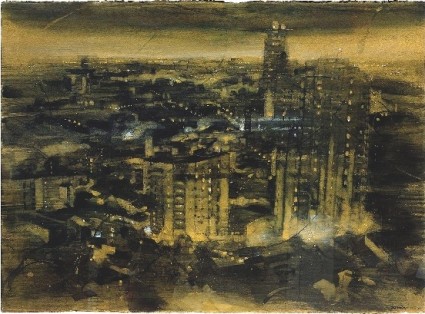
In her catalogue essay for the group show Body as Vessel, from the 3rd to the 30th of April, at Art Alive Gallery, New Delhi, curator Geeti Sen suggested that while contemporary global trends might seem to push for a fragmented, insecure image of the human body, art in India could still draw upon a traditional understanding of the body as both a sacred geography in itself and a microcosm of the universe.
Nevertheless, only Shambhavi Singh’s work seemed to specifically engage with this legacy; her paintings entitled Earth, Wind, Water, Fire and Sky use kajal, neel and acrylic to suggest planets in the universe as well as the earthen pot, which in Kabir’s poetry often represents the human body.
Puneet Kaushik’s installations graphically evoked the female body by referencing the vagina, and Mithu Sen’s paintings too broke the body down: bones emerged from feet, gullets turned into intestines. Here was the body as machine, its many parts carrying on a quasi-industrial process.
Works by Anupam Sud and Gogi Saroj Pal both concerned themselves with the gendered body. Sud’s etching Between Vows and Words continued her exploration of the man-woman relationship; like in Dialogue (1984), the male and female figures seemed simultaneously entwined and separated – by a wall of words. In Persona a female figure held up a featureless mask; the same gesture was repeated powerfully in The Laundry, where a woman pegged 'clothes' (that looked like her own skin) on a clothes line: her possible selves were hung out to dry. Pal’s Natti Binodini series (I-V) featured female forms as fluid limp as Sud’s were sculpted and muscular, bending and curving into unnatural positions as if to fit into the frame. Pal’s dreamy-eyed, red-lipped women, the flowers from their saris leaching into the background, reminded one – ironically – of classic Tagore heroines – respectable, domestic middle class women of the kind that Binodini always wanted to portray but was not allowed to.
An edited version of this was published in Art India: The Art News Magazine of India (Vol XVI, Issue 1, Quarter 1, 2009).
